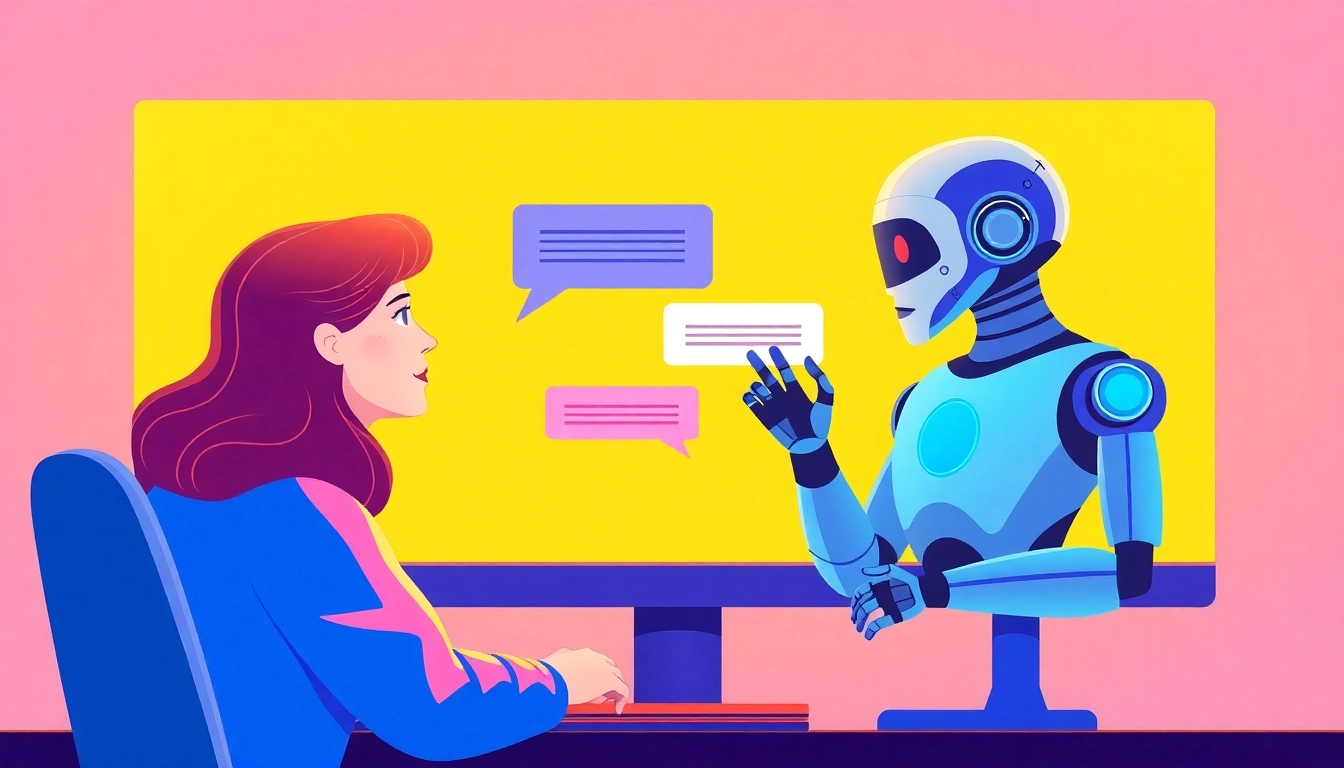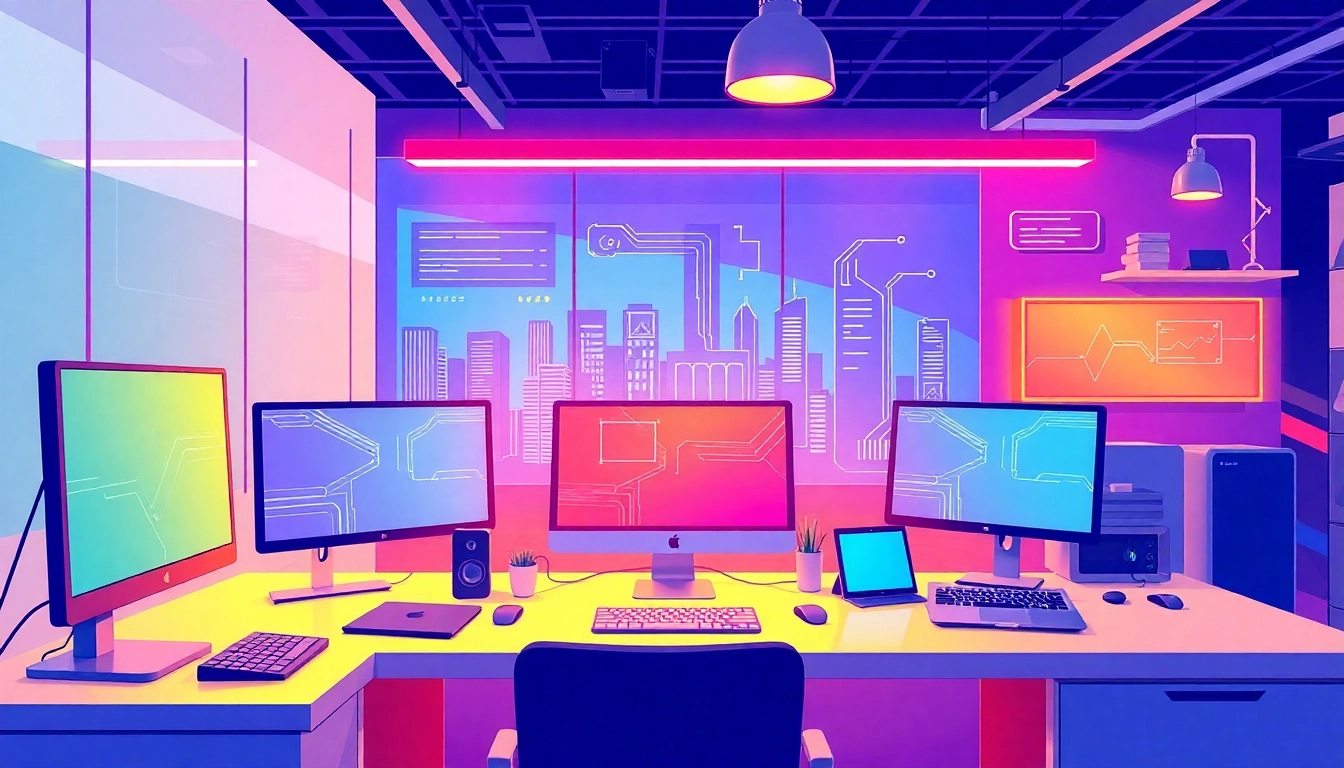The Concept of Technology
Definition and Importance
Technology is fundamentally defined as technology acts as the bridge between theoretical science and practical applications in our daily lives. Merriam-Webster defines technology as “the science of the application of knowledge to practical purposes,” emphasizing its role in improving efficiency and problem-solving across various domains. Its relevance is underscored by the ever-evolving nature of human needs and how technology adapts to fulfill these demands, thereby constantly reshaping society at large.
The importance of technology can be observed in every aspect of life. From healthcare advancements that prolong life expectancy to communication tools that break geographical barriers, technology empowers individuals and organizations alike to reach unprecedented levels of productivity and influence. As we move further into the 21st century, the integration of technology into daily living fosters both innovation and societal evolution, reinforcing its fundamental role as a cornerstone of modern existence.
Historical Evolution of Technology
The roots of technology can be traced back thousands of years. The earliest instances of technology—such as simple tools and fire—demonstrate humanity’s innate desire to manipulate the environment. The Industrial Revolution, spanning the late 18th to the early 19th centuries, marked a significant leap in technological advancement with the invention of machines that revolutionized manufacturing processes. This period illustrated how innovation leads to mass production and transforms socioeconomic structures.
Following the Industrial Revolution, the 20th century further accelerated technological evolution, characterized by the advent of electricity, telecommunication, and the early days of computing. The latter part of the century witnessed the explosion of personal computing and the internet, fundamentally altering information dissemination and accessibility. Today, as we stand on the verge of groundbreaking innovations in artificial intelligence and quantum computing, understanding this historical trajectory is vital for predicting future technological trends and their implications for humanity.
Key Principles of Technological Development
Several core principles govern technological development, including innovation, sustainability, and user-centricity. Innovation remains at the heart of technological advancement, driving the creation of new solutions to existing problems. This cycle of innovation typically adheres to a model where new ideas are generated, refined, and eventually commercialized, leading to societal shifts.
Sustainability emphasizes the need for technologies that not only meet human demands but also maintain environmental integrity and social equity. This principle challenges technologists to develop solutions that minimize resource degradation and consider long-term ecological impacts.
User-centricity focuses on understanding the needs and preferences of users in the design process. Engaging users can lead to enhanced functionality and adoption rates of new technologies, ultimately fostering a more harmonious relationship between humans and machines.
Types of Technology
Information Technology and Its Impact
Information Technology (IT) encompasses a broad range of technologies that facilitate the processing and transmission of information. Key components include hardware, software, networks, and data management systems. The impact of IT in today’s world cannot be overstated; it has revolutionized industries, enhanced productivity, and provided avenues for innovation.
One significant impact of information technology is seen in business operations. Companies utilize IT systems for streamlined processes, from supply chain management to customer relationship management (CRM). Moreover, data analytics—a subset of IT—enables businesses to make informed decisions based on real-time data insights, ultimately guiding strategic actions and enhancing competitive advantage.
The transformation of communication due to information technology is yet another notable consequence. The emergence of email, instant messaging, video conferencing, and social media platforms has redefined how individuals and organizations interact, breaking down traditional barriers of communication and fostering global connectivity.
Consumer Technology: Gadgets and Devices
Consumer technology refers to devices and products designed for personal use, impacting everyday life significantly. Examples include smartphones, tablets, wearables, and smart home devices. Each of these innovations has transformed individual lifestyles and consumer behavior.
Smartphones, with applications spanning commerce, social interaction, and personal organization, serve as a primary example of consumer technology’s pervasive role. With the addition of mobile internet, users are now constantly connected to digital environments, allowing for unprecedented access to information and services.
Smart home technologies, including devices like thermostats, security systems, and voice-activated assistants, contribute to greater energy efficiency and home management automation. The integration of artificial intelligence and machine learning into consumer technology enables personalization and advanced functionalities that enhance the user experience.
Industrial Technology in Manufacturing
Industrial technology, often referred to as production technology, encompasses the tools and methods used to produce goods. The introduction of automation and robotics in manufacturing has underscored a major advancement in this sector, resulting in increased efficiency and consistency.
Advanced Manufacturing Technologies (AMTs), such as additive manufacturing (3D printing) and computer-aided design (CAD), have shifted paradigms in product development. They facilitate rapid prototyping, allowing manufacturers to create complex components with reduced waste and enhanced design flexibility.
Furthermore, Industry 4.0 marks a new era in industrial technology, characterized by smart factories where machines and systems communicate autonomously. This shift promotes operational efficiency and real-time analytics, positioning businesses to respond to market demands swiftly and effectively.
The Role of Technology in Society
Technology’s Impact on Communication
Technology has dramatically transformed communication methods, fostering deeper connections across the globe. The transition from traditional forms of communication, such as postal mail and landline telephones, to digital platforms has changed how we interact.
Email and instant messaging provide instant communication, while social media platforms enable users to share information broadly and connect with individuals worldwide. These advancements have impacted personal relationships, professional networking, and the political landscape, allowing for rapid dissemination of information during critical events.
However, this evolution of communication also raises challenges, including issues related to misinformation, privacy, and the erosion of face-to-face interactions. Balancing the conveniences provided by technology with the implications of its usage remains a significant societal challenge.
Advancements in Health Technologies
The healthcare sector stands as one of the most significantly transformed fields due to technological advancements. Innovations such as telemedicine, wearable health monitors, and electronic health records (EHRs) are just a few examples of how technology is enhancing patient care and operational efficiency.
Telemedicine allows patients to consult healthcare providers remotely, increasing access to care, especially in rural areas. Wearable devices, such as fitness trackers and smartwatches, empower individuals to take control of their health by monitoring vitals and lifestyle behaviors in real-time.
Additionally, artificial intelligence and machine learning are creating new opportunities for diagnosis and treatment planning, further personalizing healthcare. These advancements raise questions about data security and ethics but ultimately have the potential to improve health outcomes and optimize resource allocation in the healthcare ecosystem.
Technology and Education: The New Learning Paradigm
The education sector has also experienced a seismic shift due to technology, particularly through the adoption of online learning platforms, digital classrooms, and educational software. The rise of e-learning enables students and educators to engage in interactive learning experiences that transcend traditional classroom boundaries.
Digital tools such as Learning Management Systems (LMS), virtual classrooms, and educational apps have made education more accessible and tailored to individual learning styles. This has particularly proven vital amid the ongoing global challenges, such as the COVID-19 pandemic, which necessitated remote learning environments.
While technology in education promotes inclusivity and accessibility, challenges remain regarding equitable access to technology and the need for digital literacy in both students and educators. Efforts must be made to ensure that all individuals can harness the potential of technology in their learning journeys.
Current Trends in Technology
Artificial Intelligence and Machine Learning
Artificial Intelligence (AI) and Machine Learning (ML) dominate current technological trends, transforming industries through automation and data analysis capabilities. AI utilizes algorithms to analyze vast amounts of data, draw insights, and make predictions with minimal human intervention.
Industries such as finance, healthcare, and marketing have already integrated AI-driven solutions to enhance operational efficiency, optimize decision-making, and improve customer experiences. For instance, AI algorithms are employed in fraud detection, patient diagnostics, and personalized marketing strategies.
However, the rise of AI and ML also brings challenges related to workforce displacement, ethical considerations surrounding decision-making processes, and concerns about bias in AI systems. These complexities necessitate developing policies to govern AI usage responsibly and sustainably.
The Rise of Smart Devices
The proliferation of smart devices is a pervasive trend shaping modern living. From smart home appliances to smartphones and wearable tech, these devices are redefining convenience and connectivity.
Smart devices utilize the Internet of Things (IoT) technology, enabling them to interconnect and communicate with each other to enhance user experiences. For example, smart thermostats learn user preferences and optimize energy consumption accordingly, while smart locks provide security with remote access via smartphones.
The convergence of smart devices within everyday life introduces both benefits and challenges, such as concerns about data privacy, interoperability of devices, and the environmental consequences of increased electronic waste. Balancing innovation with responsible adoption of smart technology is essential for a sustainable future.
Sustainability and Green Technology Initiatives
As global awareness of environmental challenges rises, sustainability and green technology initiatives take center stage in technological development. The emphasis on developing renewable energy sources, eco-friendly materials, and sustainable production practices showcases the growing priority placed on minimizing human impact on the planet.
Technologies such as solar panels, wind turbines, and electric vehicles exemplify the shift towards sustainable solutions that reduce carbon footprints. Moreover, advancements in smart grids and energy-efficient systems promote better resource management.
However, the transition to green technologies also involves complexities, including financial investments, policy regulations, and technological feasibility. Stakeholders across industries must collaborate to overcome these challenges and promote broad adoption of sustainable practices.
Future of Technology
Emerging Technologies on the Horizon
The future of technology is marked by several emerging trends poised to redefine industries and society. Quantum computing represents one of the most significant shifts, promising enhanced computational capabilities that can solve complex problems beyond the reach of classical computers.
Other notable developments include advances in biotechnology, nanotechnology, and 5G technology. These innovations have the potential to revolutionize healthcare, materials science, and connectivity, creating opportunities for unprecedented applications and efficiencies.
To harness the full potential of these emerging technologies, a focus on interdisciplinary collaboration, public-private partnerships, and robust regulatory frameworks will be essential. Such measures can facilitate innovation while ensuring ethical considerations and social impacts are adequately addressed.
The Ethics of Future Technologies
As technology evolves, so too do the ethical dilemmas associated with its development and integration into society. Issues such as data privacy, surveillance, algorithmic bias, and the potential for job displacement require thoughtful consideration and proactive governance.
Technology companies and stakeholders must prioritize ethics in their innovation processes, adopting frameworks that ensure accountability and transparency. Engaging diverse perspectives in technology development can foster solutions that reflect equitable outcomes and societal needs.
Additionally, discussions surrounding the ethical use of emerging technologies—particularly in AI and biotechnology—must focus on safeguarding individual rights while promoting societal progress.
Preparing for a Technological Future
Preparing for an increasingly technological landscape demands strategic foresight, adaptability, and continuous learning. Individuals and organizations alike must prioritize digital literacy and skill development to thrive amid rapid change.
Educational institutions should integrate technology-focused curricula that equip students with the necessary skills to navigate future job markets. Lifelong learning initiatives may also play a crucial role in fostering adaptability across diverse professions.
For organizations, staying ahead of technological advancements requires investment in research and development, as well as fostering a culture of innovation. By embracing new technologies and strategies, businesses can better position themselves to evolve alongside the shifting landscape of the future.



